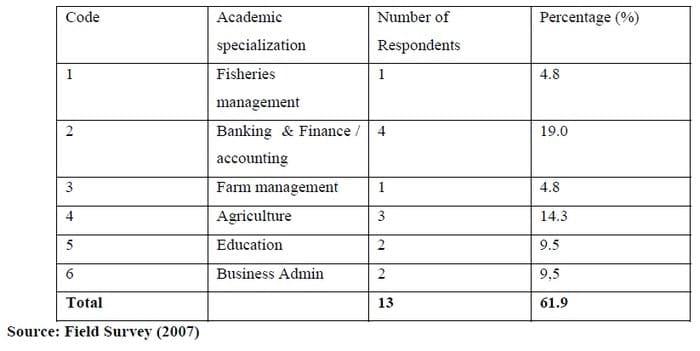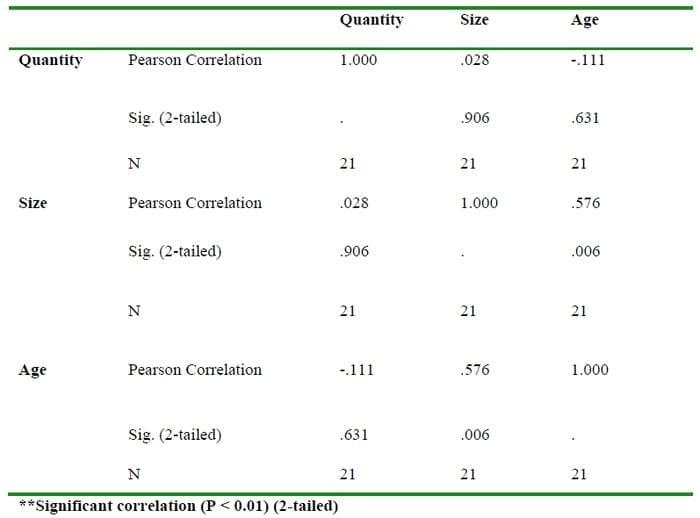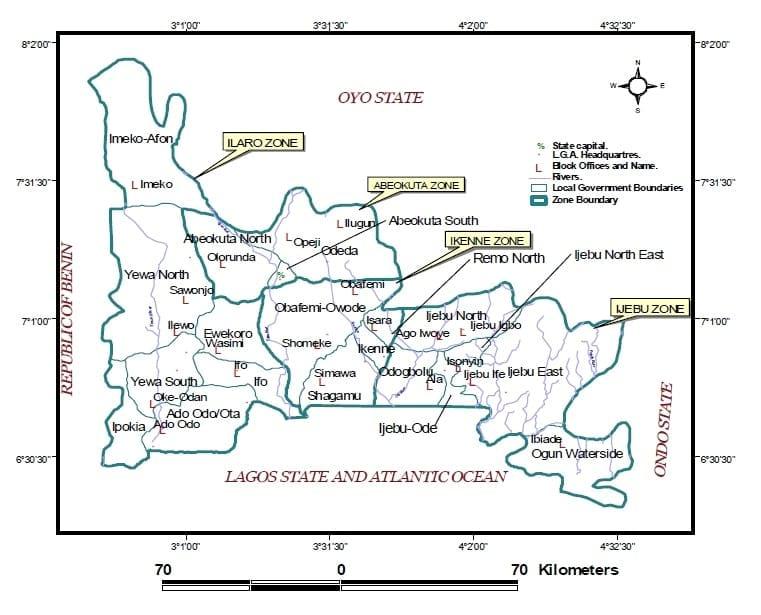Adikwu, A.I. (1999). Aquaculture in Nigeria: Prospects and Constraints. Journal of Fisheries Technology, Federal College of Fresh Water Fisheries Technology, New Bussa, Niger State, Nigeria. I(1):16 – 25.
Aquaculture and Inland Fisheries Project (AIFP), (2005). Overview of Fisheries in Nigeria. Newsletter of the Aquaculture and Inland Fisheries Project of the National Special Task Force for Food Security in Nigeria, Technical Note No. 16, June.
Anyanwu, P. E., Fleuren, W.G., & Alakija, A. (2005). Water Recirculating System Aquaculture in Nigeria: Problems and Prospects of the Dutch Model. Fisheries Society of Nigeria (FISON) Conference Proceedings.
Atanda, A. N. (2006). Analysis of Freshwater Fish Seed Resources in Nigeria. Fisheries Society of Nigeria (FISON) Conference Proceedings.
Barker, H.C. (1986). Investment Opportunities in Fish Seed Technology. Fisheries Society of Nigeria (FISON) Conference Proceedings.
Bondad-Reantaso, M.G. (2007). Assessment of freshwater fish seed resources for sustainable aquaculture. FAO Fisheries Technical Paper, No. 501. Rome: FAO
Boyd, C. (1982). Water Quality Management for Pond Fish Culture (Developments in Aquaculture and Fisheries Science). Netherlands: Elsevier Science Publishing Co.
Cowx, I.G. & Van Anrooy, R. (2010). Social, economic and ecological objectives of inland commercial and recreational fisheries and aquaculture. EIFAC Proceedings of the symposium on Interactions between social, economic and ecological objectives of inland commercial and recreational fisheries and aquaculture. Antalya, Turkey. EIFAC Occasional Paper No.44. Rome: FAO.
Dada, A.A. (2006). Some Hints on Outdoor Nursery Management Operation for Heterobranchus bidorsalis Fisheries Society of Nigeria (FISON) Conference Proceedings.
Dada, B.F. (2003). Contribution of Fisheries to Employment Generation, National Economy and food Security in Nigeria. A paper delivered at the 2003 Fisheries Society of Nigeria (FISON) Public Lecture.
Dunham, R. A., Majumdar, K., Hallerman, E., Bartley, D., Mair, G., Hulata, G. Liu, Z., Pongthana, N., Bakos, J., Penman, D., Gupa, M., Ratalishbweg, P., & Hoestgen Schwark, G. (2001). Review of the status of Aquaculture genetics. In: R.P. Subasinghe, P. Bueno, M. J. Philips, C. Hough, S.E. McGladding, and J.R. Arthur (Eds.). Aquaculture in the third Millennium. Technical proceedings of the conference on aquaculture in the third Millennium, Bangkok, Thailand. NAGA, Bangkok and FAO Rome. 20-25, Pp 137-166.
Edwards, P., Little, D.C., & Demaine, H. (2002). Rural Aquaculture. United Kingdom: CABI Publishing.
Eleshin-Nla, A.I. (2005). Models of Water Recirculation Aquaculture System. Fisheries Society of Nigeria (FISON) Conference Proceedings.
Fagade, S.O. (1992). Keynote Address to Production, Utilization, and Marketing in Fisheries. Status and Opportunities. FISON Conference Proceedings.
Food and Agriculture Organization of the United Nations, FAO (1997). Report of the Workshop on Gender Roles and Issues in Artisanal Fisheries in West Africa, Lomé, Togo. In: B.W. Horemans and A.M. Jallow (Eds.), 1997.
Federal Department of Fisheries (FDF). (1995). Federal Department of Fisheries Statistics.
Horsfall, J.D. (2005). Tilapia as Staple Culturable Fish Species for the Nigeria Rural Fish Farmers: A Review of its potentiality. FISON Conference Proceedings.
Huy, H.P.V., MacNiven, A., Tu, N.V., Bhujel, R.C. & David, C.L. (2003). Tilapia Seed Production in Hoi Chi Minh City, Southern Vietnam. Aquaculture Asia, 3(4), 23-25.
Ita, E.O. & Sado, E.K. (1984). Inventory of Nigerian Inland waters and their fishery resources with special reference to ponds, lakes, reservoirs and major Rivers: surface area and potential yield estimates. Kainji Lake Research Institute Annual Report.
Little, D.C. & Edwards, P. (2003). Integrated Livestock-fish Farming Systems, Inland Water Resources and Aquaculture. FAO.
Madu, C. T. (1994). Status of fish hatcheries and fish seed fingerlings production in Nigeria. National Institute of Freshwater Fisheries Research (NIFFR) Annual Report.
Mair, G. (2002). Supply of good quality fish seed for sustainable aquaculture. Aquaculture Asia, 7(2), 25.
Moody, F.O. & Folorunsho, J.K. (2006). Assessment of water quality in Kigera Fish Farm, New Bussa. Fisheries Society of Nigeria (FISON) Conference Proceedings.
Nalçaoglu, H. & Sari, M. (2010). Sociological analysis of sustainable fisheries management of the Endemic Pearl mullet in the fishing villages of Lake Van, Turkey. Proceedings of the symposium on “Interactions between social, economic and ecological objectives of inland commercial and recreational fisheries and aquaculture”, Antalya, Turkey. EIFAC Occasional Paper No.44. Rome: FAO.
National Informatics Centre (NIC). (2007). Fish seed production 2004 – 2005. Fisheries at a glance in Tripura (2004–2005).
National Informatics Centre (NIC). (2007). Fish seed production 2004 – 05.
National Population Commission (NPC). (2006). NPC releases 2006 population figure.
Nwadukwe, F. (2006). Induced Breeding. Workshop on Fish Farming Organized by the Federal Department of Fisheries (FDF) and Fisheries Society of Nigeria (FISON).
Obiyai, K.K. & Ekubo, N.A. (2011). Development of Entrepreneurship Skills Training Module on Fish Breeding and Hatching Occupation. Asian Journal of Agricultural Sciences, 3(2), 111-114.
Ogun State Agricultural Development Programme (OGADEP). (2006). Annual Fisheries Report.
Ogun State Agricultural Development Programme (OGADEP). (2007). Annual Fisheries Report.
Oguntade, O.R., Ayinla, O.A., Oresegun, A., Adeogun, O.A., Ogunbadejo, H.G.K., & Alhaji, T. (2005). Trends in Fish Culture in Urban and Peri-urban Areas of Lagos State, Fisheries Society of Nigeria (FISON) Conference Proceedings.
Oloruntoba, A. & Adegbite, D.A. (2006). Improving Agricultural Extension Services through University Outreach Initiatives: A Case of Farmers in Model Villages in Ogun State, Nigeria. The Journal of Agricultural Education and Extension, 12(4), 273-283.
Oloruntoba, A. & Fakoya, E.O. (2002). Constraints to the Increased Fishing Productivity of Women in Rural peri-urban setting of Lagos State, Nigeria. Journal of Extension Systems, 19(2), 60-71.
Otubusin, S.O. (1992). Aquaculture, Food Security and Environment. Invited Lecture Presented at the Formal Launching of the National Association of Fisheries Students (NAFIS). University of Agriculture, Abeokuta (UNAAB).
Otubusin, S. O. (1998). Sustainable Utilization of Nigeria’s aquatic/wetland resources: Fish cage, pen and enclosure systems options. In S.O. Otubusin, et al., (Eds.). Sustainable utilization of Aquatic/Wetlands Resources. University of Agriculture, Abeokuta, UNAAB, Abeokuta, Nigeria. Pp. 69-74.
Pickering, A.D. & Stewart, A. (1984). Acclimation of the interrenal tissue of the brown trout, Salmo trutta L., to chronic crowding stress. Journal of Fish Biology, 24, 731–740.
Pillay, T.V.R. & Dill, W.A. (1976). Advances in Aquaculture. FAO Technical Conference on Aquaculture. Kyoto.
Reddy, P.V.G.K. (1999). Genetic resources of Indian major carps. FAO Fisheries technical paper 387. Rome: FAO. 76p.
Seaver, B. (2011). Redefining seafood sustainability.
TheFishSite. (2009). Nigeria’s dependence on Fish imports.
Tsadu, S.M., Yisa, A., & Ogubude, O.S. (2006). Separation of hatchlings from egg shells and unhatched eggs of Clarias gariepinus using net hapa and survival from brood stocks of varying sizes. Fisheries Society of Nigeria (FISON) Conference Proceedings, 2006.
Winrock International. (2010). Project Fact sheet: Nigeria MARKETS.











.jpg&w=3840&q=75)